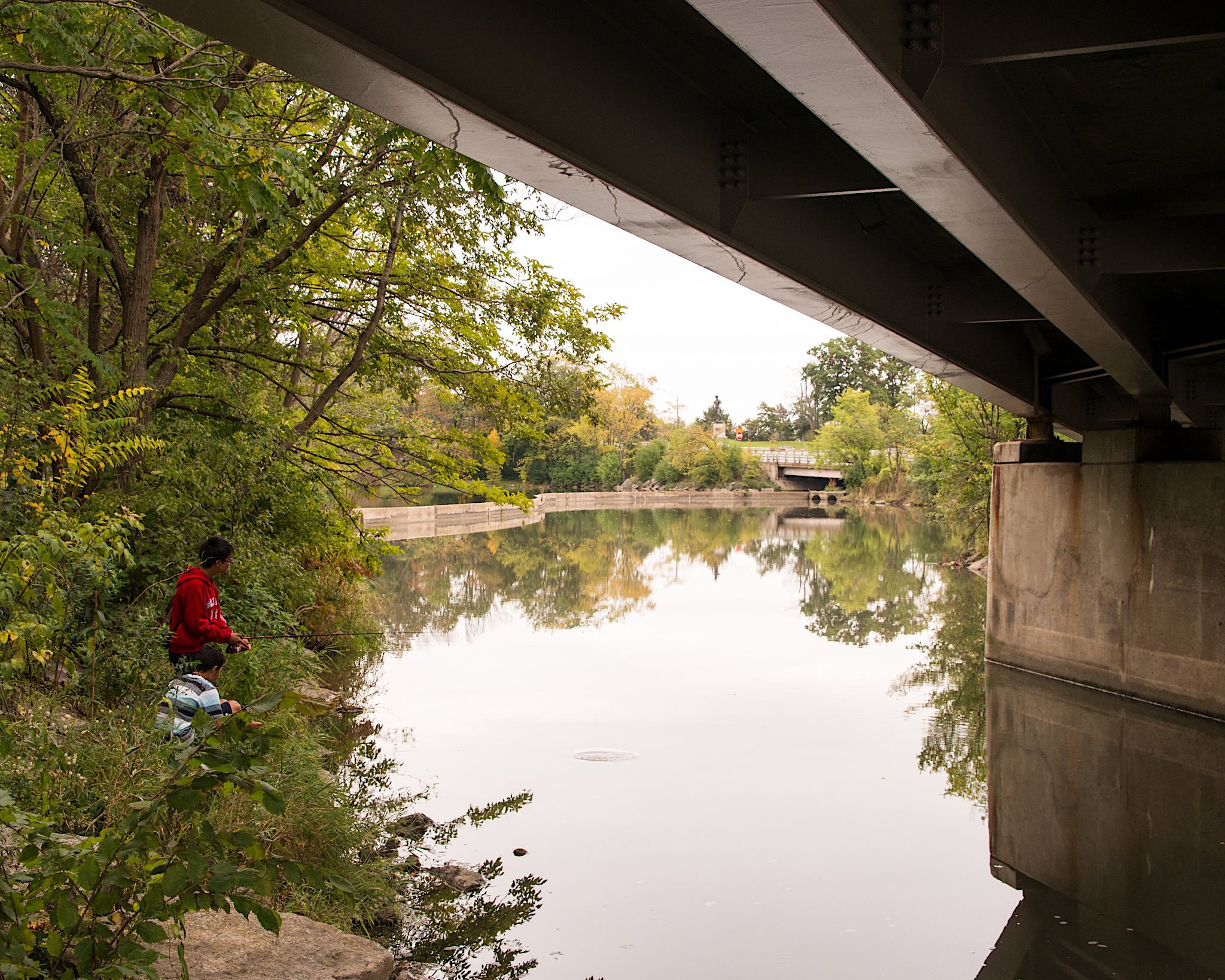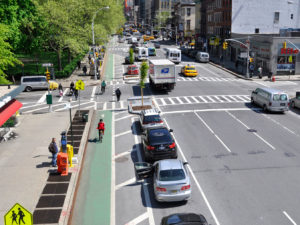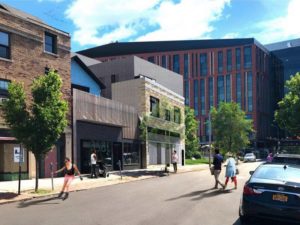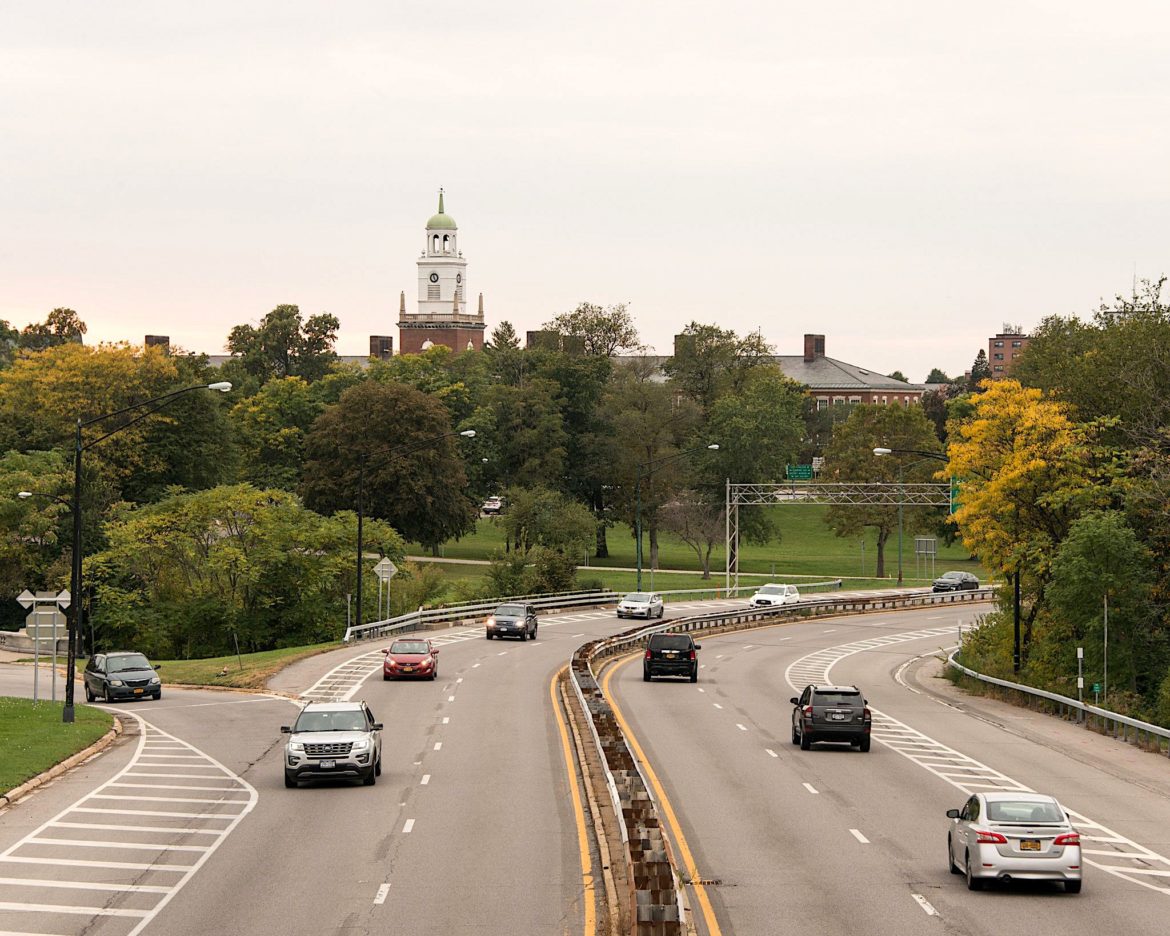
“The Scajaquada Corridor is a city dweller’s dreamland, a culture-vulture Valhalla,” writes Steven Kurutz for The New York Times. “Within two miles there is a restored Frank Lloyd Wright house you can visit, an art museum with Picassos and Gauguins, three college campuses, a zoo and a history museum in a majestic Greek Revival building from the 1901 Pan Am Exposition listed on the National Historic Register. All of it borders a 356-acre park designed by Frederick Law Olmsted and Calvert Vaux.” “There is just one problem: An expressway runs through it.” “The Scajaquada Expressway, or Route 198, is a 3.2-mile tear in the urban fabric. Built in the early 1960s, it slices Delaware Park in half, isolates north Buffalo from destinations south, makes walking or bicycling in the area a death-courting activity and creates the strange optical illusions common to freewayscapes. The Albright-Knox Art Gallery and the Buffalo History Museum are less than half a mile apart, on opposite sides of the Scajaquada. Looking across the expanse of pavement and speeding traffic, however, the distance seems insurmountable.” “‘People don’t cross the Scajaquada’” said Alison Merner, the communications coordinator for GObike Buffalo, who grew up in a neighborhood that borders the expressway. ‘If I were going to go for a run or a short bike ride, I would always stay on my side. You were kind of on an island.'” “The Scajaquada is not just a local barrier but also a poster road for a growing movement being championed by progressives in the urban-planning community. They want to tear down some highways in cities and replace all that elevated-and-barricaded pavement with lower-speed streets that favor pedestrians and bicyclists and foster greater connectivity among neighborhoods and residents.” “It’s the kind of argument you can imagine the journalist and activist Jane Jacobs making, and indeed she led a successful campaign against Robert Moses in the 1960s to block a planned expressway through Lower Manhattan before it could be built. The highway would have resulted in the demolition of wide swaths of Greenwich Village and SoHo.” “One of the groups leading the new charge is Congress for the New Urbanism. Since 2008, it has published a biennial list called ‘Freeways Without Futures,’ which names highways whose elimination would, according to its website, ‘remove a blight’ from their cities. The 2017 edition includes Route 710 in Pasadena, Calif., Interstate 70 in Denver, Interstate 375 in Detroit and, paved enemy No. 1, the Scajaquada Expressway.”
The Scajaquada Expressway bisects Delaware Park and several neighborhoods in Buffalo, but maybe not for long. (Image credit: Shane Lavalette / The New York Times)
The Scajaquada Expressway bisects Delaware Park and several neighborhoods in Buffalo, but maybe not for long. (Image credit: Shane Lavalette / The New York Times)
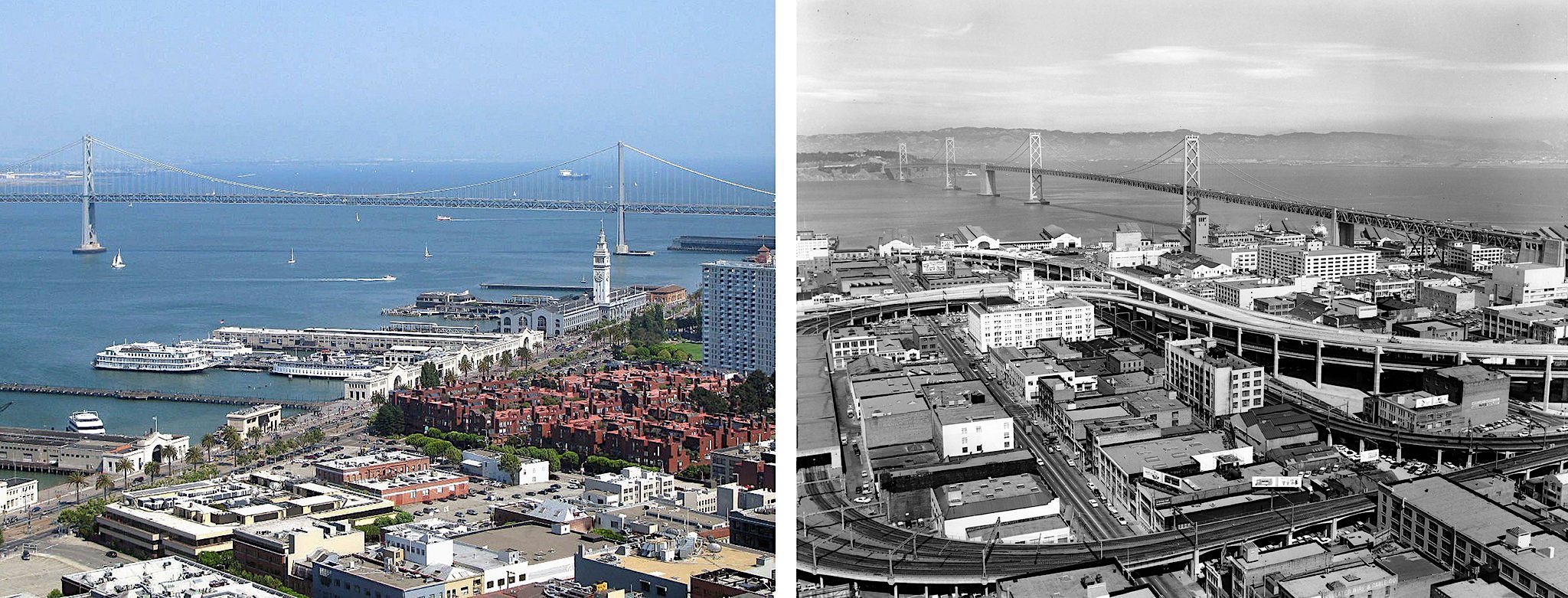
San Francisco’s double-decker Embarcadero Freeway, right, in 1957 and, left, in 2008 after it was demolished instead of rebuilt after the 1989 Loma Prieta earthquake. (Image credit, from left: Lisa Baertlein / Reuters, Associated Press)
San Francisco’s double-decker Embarcadero Freeway, right, in 1957 and, left, in 2008 after it was demolished instead of rebuilt after the 1989 Loma Prieta earthquake. (Image credit, from left: Lisa Baertlein / Reuters, Associated Press)



